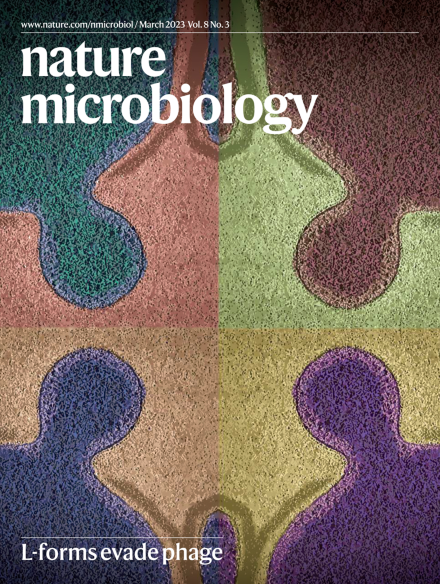Play all audios:
L-FORMS EVADE PHAGE Shown are vectorized false-coloured images of L-form-like _Enterococcus faecalis_ cells that are in the process of escaping the cell wall sacculus. Wohlfarth et al.
report that L-form escape is triggered by the phage-derived endolysin Ply007, which functions as a peptidoglycan hydrolase. In Gram-positive bacteria, L-form conversion enables transient
escape from further phage infection. See Wohlfarth et al. Image: Jan Wohlfarth, ETH Zürich; with support from Fabienne Estermann, University of Basel. Cover Design: Valentina Monaco.

